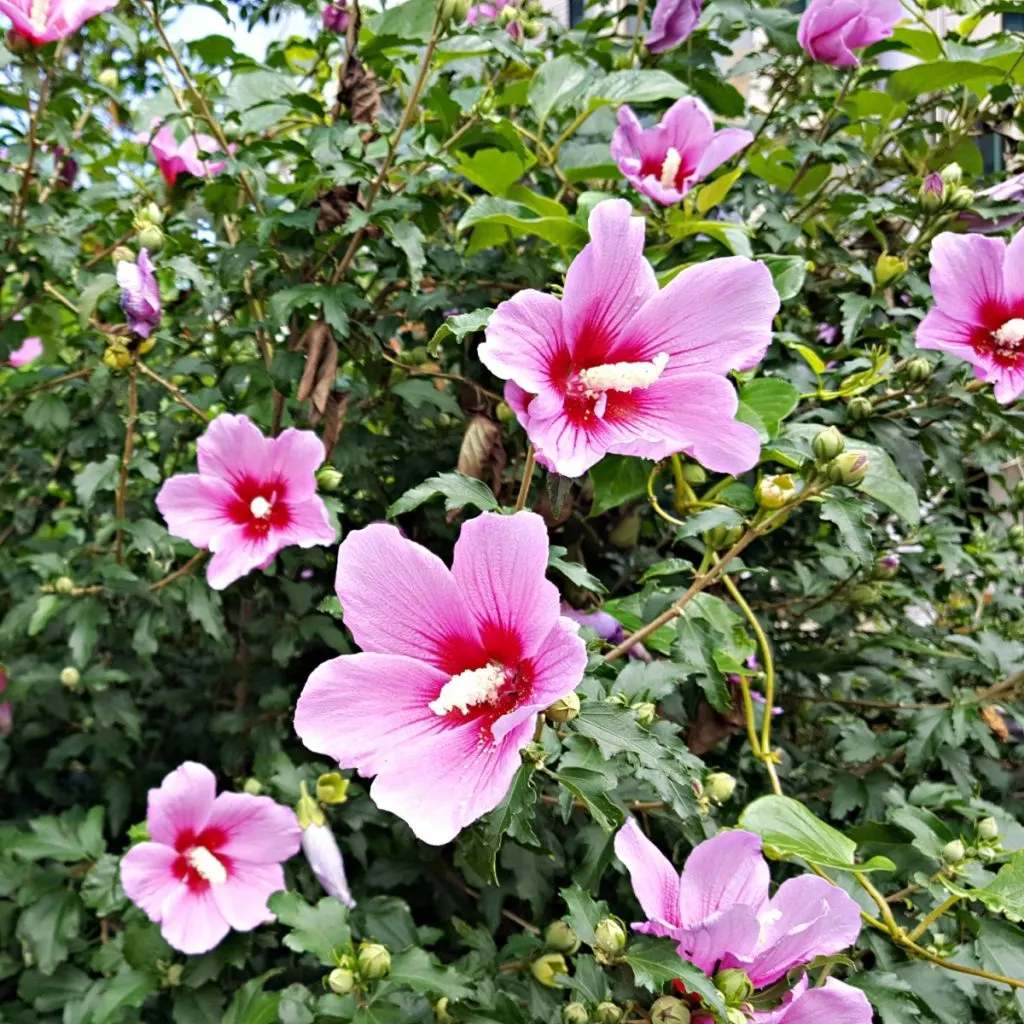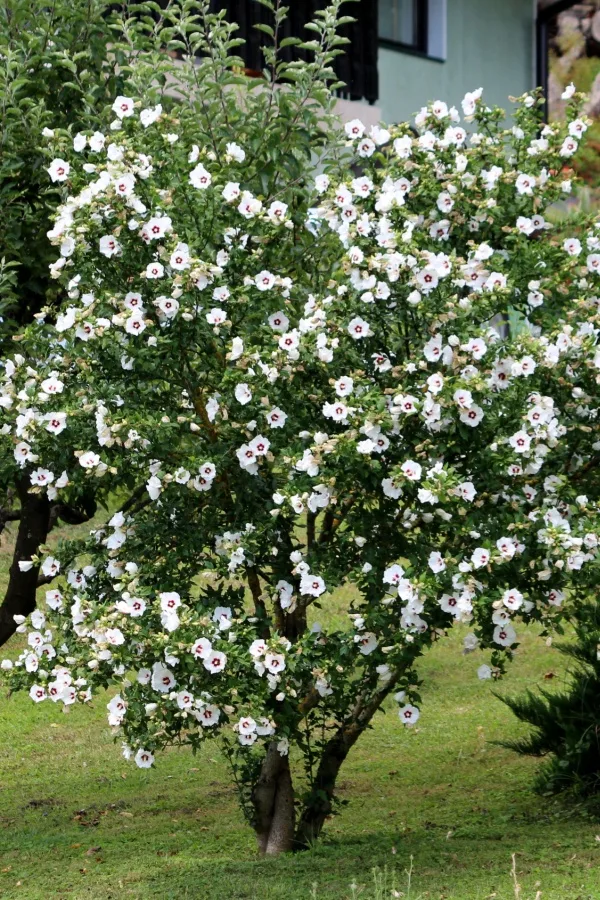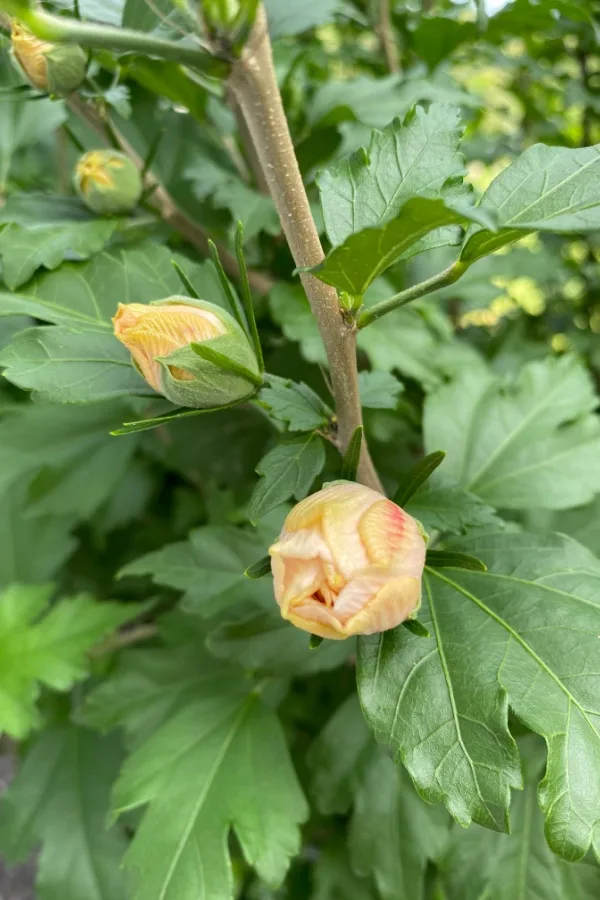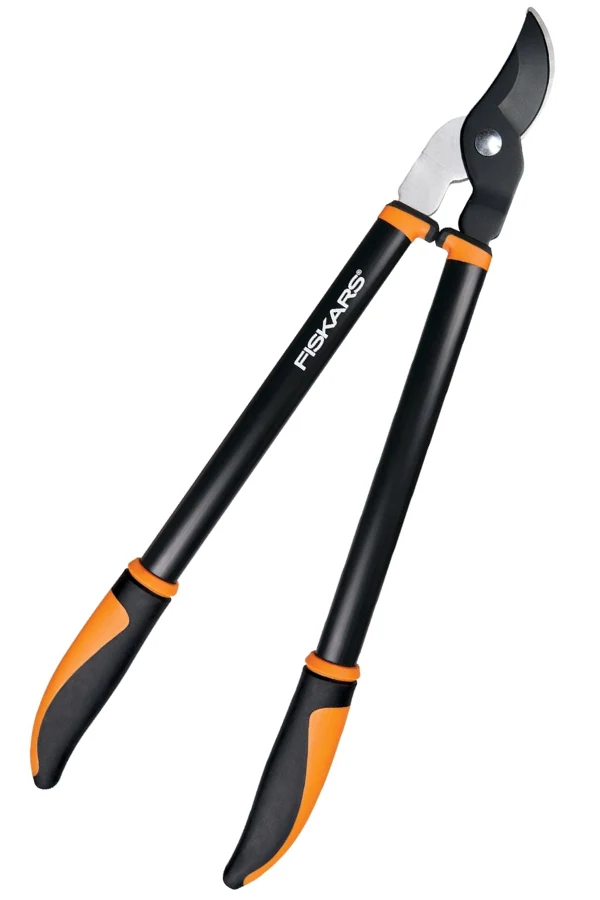Did you know that how you care for Rose of Sharon plants after they bloom can make a huge difference in not only the health of the plant this year but also its ability to bloom again next year?
Rose of Sharon is a popular perennial shrub that can handle a wide variety of growing conditions. As long as it has at least 6 hours of full sun, this hardy shrub can withstand drought, humidity, high heat, and poor soil quality, making it a great choice for gardeners of all kinds.
Rose of Sharon is considered to be a hardy hibiscus because it can handle colder weather. While it still features tropical-like blooms, it’s actually is a deciduous plant that loses its foliage every fall only to regrow it again in the spring.

You can find Rose of Sharon in all different sizes and shapes. Towering plants that can reach over 16 feet tall make excellent natural shade covers. Meanwhile, shorter dwarf varieties grow well in containers or along flowerbeds.
Rose of Sharon also features a wide variety of bloom styles as well as color options. But no matter what style or type you grow, if you don’t care for the plants properly after blooming, your plants can struggle to set blooms the following year – or not even bloom at all!
How Rose Of Sharon Blooms
Even though it is called a “rose”, the Rose of Sharon is not actually a rose bush at all. It does however share many of the same similarities of a climbing rose, except for one very important aspect. Unlike climbing Roses, Rose of Sharon can bloom from summer all the way to fall.
This is long past when many other perennials are done flowering. The late blooming time helps to bring in a steady stream of pollinators such as hummingbirds and butterflies at a time when other plants are all but finished with their blooming.
But what can leave some gardeners frustrated with this perennial is its lack of blooms from one year to the next. And almost always, when there is an issue with a lack of flowering, it can be traced back to how the plant was cared for following its previous year’s bloom cycle.

How To Care For Rose Of Sharon After It Blooms
The Importance Of Deadheading
One of the best ways to keep Rose of Sharon blooming strong is to deadhead spent blooms. This is the process of removing or cutting off blooms that are starting to fade.
Not only does this help to keep the plants looking tidy and well-kept, but it also goes a long way to keeping the plants healthy. In fact, deadheading allows the plant to conserve a tremendous amount of power and energy.

Even though spent blooms no longer absorb nutrients from the plant, that doesn’t stop the plant from trying to save it. Rose of Sharon will continue to send resources to try to “fix” dying blooms, even though it can’t help preserve them in the least.
But by deadheading, all of those nutrients can instead go toward creating and supporting new blooms for the following year. Even better, and maybe most importantly, it stops the plant from becoming covered with seed heads.
Once the petals die back, if the flower stem remains, seed heads form. Not only does this take even more power from your plant, it also ends up scattering thousands upon thousands of tiny volunteer seedlings in your flowerbeds. But when you deadhead – that problem is eliminated before it ever happens!
Proper Pruning
Beyond deadheading, pruning your bush can help with future blooms as well. While you don’t have to prune Rose of Sharon in order for it to grow, it helps to encourage more blooms the following year. But it’s important to prune correctly or you can actually cause your bush not to bloom next year!
In fact, one of the most common reasons why many gardeners fail to get blooms on their Rose of Sharon is because they prune or shape their plants at the wrong time. This is an issue because Rose of Sharon plants set blooms on new wood.
When gardeners prune in the spring or early summer, they are removing all of that new wood. In turn, it also removes the chance for any new blooms to form for that year.

Instead, the best time to prune is right after the bush finishes its bloom cycle in late summer or fall. This way, there is never any danger of removing new wood or future blooms.
You can also prune plants when they are dormant during the winter months. Just don’t prune plants once any new growth begins to appear. At this point, you are better off waiting to prune until late summer once the blooms have died back.
How To Prune Rose Of Sharon
How you prune depends on the age of the plant. Younger shrubs can benefit from a light pruning in late summer or early fall. This mostly helps to maintain a certain look or shape of the plant.
For older shrubs that are overgrown, you may have to prune a bit heavier. Since the Rose of Sharon blooms on new wood, remove any old and twisted branches to help clean up the overall look of the plant.
Use a pair of sharp, clean pruners to tackle the task. A pair of bypass loppers that feature long handles are great for cutting thicker branches in hard to reach spots. Product Link: Fiskars 24-Inch Control Bypass Lopper
What To Prune
Remove any branches that are pointing inwards or that are crossing another branch. This helps to open the plants up and allows for better airflow. Be sure to also cut back any branches that are broken, weak, or show signs of damage.
You can also top your plants to keep a specific size or shape. This is especially important for taller varieties that might outgrow their current location.
Take a step back and look at the overall shape of the plant as you are pruning. It can be hard to see where exactly to prune when you are up close and personal with the plant, often resulting in over-pruning.
Thankfully, even if you go a little too heavy on pruning, mature Rose of Sharon plants can handle it. In fact, you can remove up to a third of the plant at a time. New growth should still appear after plants come out of dormancy in the spring.
Fertilizing – What To Do With Rose Of Sharon After It Blooms
As for fertilizing, you only need to fertilize Rose of Sharon in the early spring when it first comes out. An all purpose 10-10-10 or 15-15-15 granular fertilizer is best. Do not fertilize in late summer or fall as it will cause unwanted late season growth. Affiliate Product Link: Southern Ag All Purpose Granular Fertilizer 10-10-10
By properly deadheading Rose of Sharon blooms and pruning back branches at just the right time, you can enjoy year after year of brilliant tropical blooms – even in the colder climates! For more on summer care of bushes and shrubs, see our article: How To Deadhead & Fertilize Rose Bushes – The Secrets To Keep Your Roses Blooming!
Simple Garden Life
Follow Our Facebook Page For Even More Great Tips! Simple Garden Life Facebook Page
Simple Garden Life is a website dedicated to keeping gardening fun, simple and enjoyable! We publish two new articles each week along with a new garden podcast episode every two weeks. This article may contain affiliate links.

